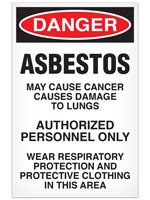



Find all of your laboratory and workplace safety supplies at Safety Emporium!
 Malaise |
 Glossary Index |
 Manufacturer |
| MSDS Topics |
Free Sites | FAQ's | Regulations | Glossary | Software | Suppliers |
| Books | Forum | Poll | Fun stuff | Quiz | Store | |
| Understand your MSDS with the MS-Demystifier | Search ALL our MSDS info | |||||
A malignancy refers to a cell or tumor that is growing in an uncontrolled fashion and is threatening to life (in other words, cancer, or "malignant tumor").
Malignancies have a tendency to metastasize (spread to other parts of the body) easily, making the treatment difficult and resulting in poorer chances for survival.
A tumor that is NOT malignant is called benign or non-malignant.
There are many risk factors for cancer and it has many causes. Some of these are known, and many more aren't. At least one out of four people will develop some form of cancer during their lifetime, some of the most common ones being prostate cancer and non-malignant skin cancers.

We have all kinds of first aid signs, posters and labels at Safety Emporium.
According to a study in Pharm Res 2008, 25(9), pp 2097-2116, "Cancer is a Preventable Disease that Requires Major Lifestyle Changes, "Only 5-10% of all cancer cases can be attributed to genetic defects, whereas the remaining 90-95% have their roots in the environment and lifestyle. The lifestyle factors include cigarette smoking, diet (fried foods, red meat), alcohol, sun exposure, environmental pollutants, infections, stress, obesity, and physical inactivity. The evidence indicates that of all cancer-related deaths, almost 25-30% are due to tobacco, as many as 30- 35% are linked to diet, about 15-20% are due to infections, and the remaining percentage are due to other factors like radiation, stress, physical activity, environmental pollutants etc.
How serious of a hazard is carcinogen exposure at work? According to an editorial in Ind Health. 2015, 53(4), pp 307-309, "Eliminating occupational cancer", the ILO estimates that occupational exposures cause 5.3 to 8.4% of all cancers, with the 10 most important occupational carcinogens counting for around 85% of all occupational deaths. According to these statistics, you are more likely to die from occupational cancer than by a workplace accident! However, these statistics are probably skewed by a significant number of people who were exposed to asbestos, a substance that has since been eliminated from the vast majority of workplaces.
Regardless, the single best prevention for cancer is to not use tobacco products. Of course, there are many other components to a healthy life style that reduce your risk of cancer such as proper diet and exercise.
If the Safety Data Sheet says that a substance can cause malignancies, treat it with the utmost care and respect. Malignant cancers are ultimately fatal in the vast majority of cases, although great advances in cancer therapy are being made every day.
Avoid the use of the material if at all possible, especially if you have other risk factors for a particular kind of cancer (family history, being overweight, smoking etc.). Consider replacing the material with one that is not carcinogenic; there are often other available alternatives that work just as well.
If you must use the material, utilize proper engineering controls such as a fume hood or other local exhaust ventilation as well as proper personal protective equipment such as gloves and respirators.

Signs, training materials and supplies from Safety Emporium can help ensure a safe and healthy workplace.
See also: carcinogen, cytotoxin, carcinoma, metastasis.
Additional definitions from Google and OneLook.
Entry last updated: Tuesday, January 3, 2023. This page is copyright 2000-2025 by ILPI. Unauthorized duplication or posting on other web sites is expressly prohibited. Send suggestions, comments, and new entry desires (include the URL if applicable) to us by email.
Disclaimer: The information contained herein is believed to be true and accurate, however ILPI makes no guarantees concerning the veracity of any statement. Use of any information on this page is at the reader's own risk. ILPI strongly encourages the reader to consult the appropriate local, state and federal agencies concerning the matters discussed herein.